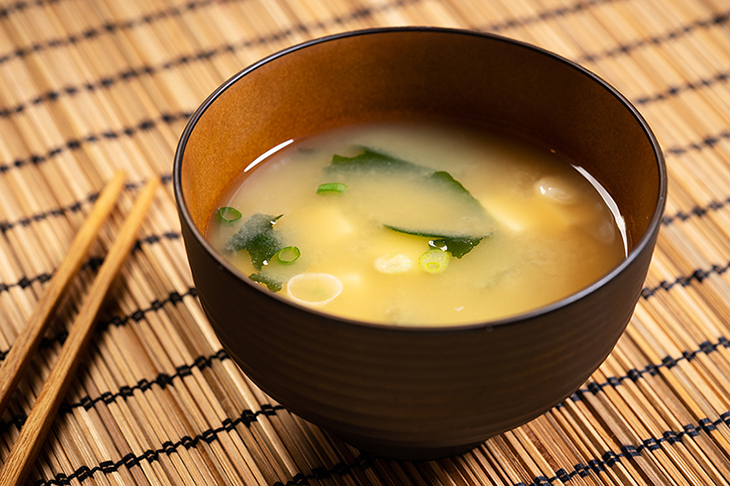5. Miso soup

According to the Vegetarian Resource Group, the Japanese have been eating miso soup for thousands of years and consider it a comfort food. Although the amount of sodium in the soup varies depending on the chef and the type of miso used, a 2-cup serving can contain up to 1,100 milligrams of sodium. Many miso soup recipes include a lot of salt. Excessive salt consumption can increase your risk of health problems such as heart disease, stroke, and high blood pressure. Miso soup is a popular accompaniment to sushi and rice dishes in Japan. Miso is a Japanese word that means “fermented beans.” Have you ever noticed that when you order sushi at your local Japanese restaurant, you are given a bowl of hot miso soup? Miso, a fermented soy product in the form of a paste, is a traditional Japanese diet staple. It’s a popular condiment and ingredient in Japanese sauces and soups. Miso has gained popularity in Western cuisines in recent years, with chefs and food enthusiasts incorporating this Japanese ingredient into their recipes. Its bold and umami flavors add depth to a wide range of dishes. Miso soup is a light, nutritious soup that is popular in Japan.
Because of its health benefits, it has grown in popularity in Western countries. Traditional miso soup is made from fermented soybeans. Miso, on the other hand, can be made from soybean paste mixed with grains or beans. As a result, not all miso is gluten free. Miso comes in several varieties, each with its own set of ingredients, fermentation time, and flavor. White miso, made from soybeans and rice, is the most common flavor of miso. This miso is both light in color and flavor. Because of its sweet, slightly salty flavor, it can be used in a variety of foods other than soup.Yellow miso is similar to white miso, but it is made from soybeans and barley instead of soybeans and rice. It is fermented for a longer period of time than white miso, but it still has a mild flavor. Barley miso is similar to yellow miso, but it is fermented for a longer period of time. This fermentation brings out the barley flavor while keeping the overall flavor mild and sweet. Finally, red, brown, or dark miso is darker in color and made primarily of soybeans, as opposed to the other varieties. It has a much stronger and saltier flavor than most other types of miso. Miso of this type can be fermented for up to three years.
While studies have shown the beneficial effects of miso soup on your heart health, it should nevertheless be consumed in moderation – especially if you are sensitive to sodium due to your propensity to make kidney stones. Instead of adding salt to your miso soup for flavor, add vegetables and seaweed for a healthier alternative. Another thing to keep in mind is that soy products are goitrogens, which means they can impair thyroid function.



